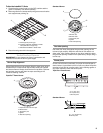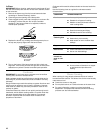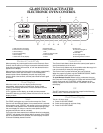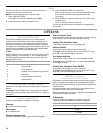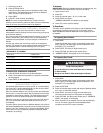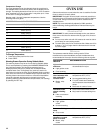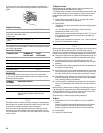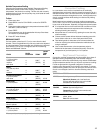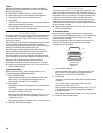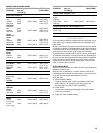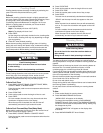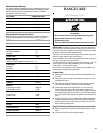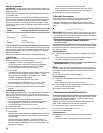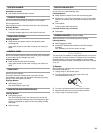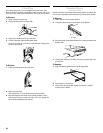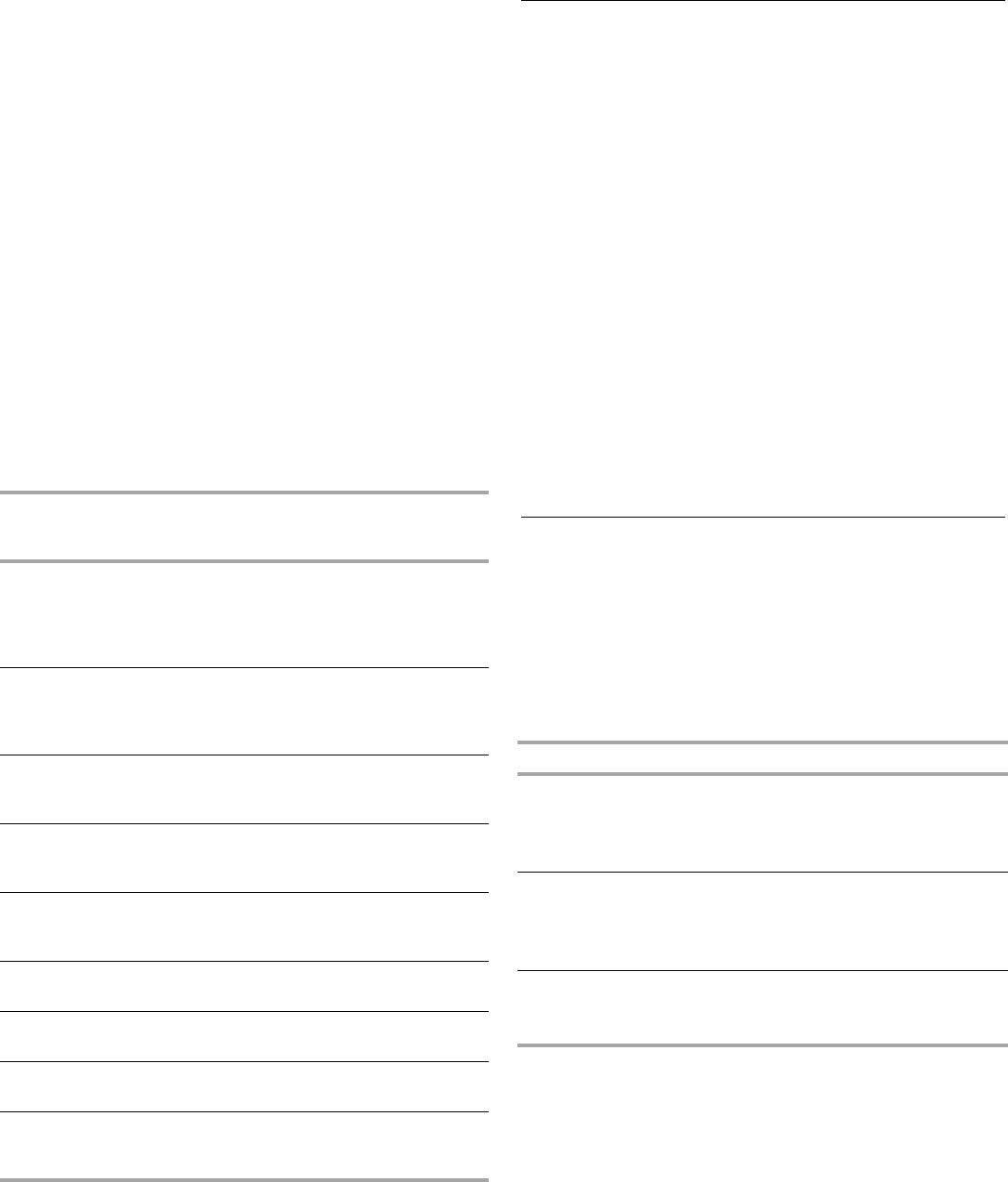
17
Variable Temperature Broiling
Changing the temperature when Variable Temperature Broiling
allows more precise control when cooking. The lower the
temperature, the slower the cooking. Thicker cuts and unevenly
shaped pieces of meat, fish and poultry may cook better at lower
broiling temperatures.
To Use:
1. Close oven door.
2. Press BROIL once for FULL BROIL or twice for CENTER
BROIL.
3. Press the number pads to set a temperature between 300°F
and 500°F (149°C to 260°C).
4. Press START.
The temperature can be changed after this step. Start does
not need to be pressed again.
5. Press OFF when finished.
BROILING CHART
For best results, place food 3" (7 cm) or more from the broil
element. Times are guidelines only and may need to be adjusted
for individual tastes. Recommended rack positions are numbered
from bottom (1) to top (4). For diagram, see the “Positioning
Racks and Bakeware” section.
*Place up to 9 patties, equally spaced, on broiler grid.
Convection Cooking
In a convection oven, the fan-circulated hot air continually
distributes heat more evenly than the natural movement of air in a
standard thermal oven. This movement of hot air helps maintain a
consistent temperature throughout the oven, cooking foods more
evenly, crisping surfaces while sealing in moisture and yielding
crustier breads.
Most foods can be cooked by lowering cooking temperatures
25°F to 50°F (14°C to 28°C), and cooking time can be shortened
by as much as 30 percent, especially for large turkeys and roasts.
■ It is important not to cover foods with lids or aluminum foil so
that surface areas remain exposed to the circulating air,
allowing browning and crisping.
■ Keep heat loss to a minimum by opening the oven door only
when necessary.
■ Choose cookie sheets without sides and roasting pans with
lower sides to allow air to move freely around the food.
■ Test baked goods for doneness a few minutes before the
minimum cooking time with an alternative method such as
using a toothpick.
■ Use a meat thermometer or the temperature probe to
determine the doneness of meats and poultry. Check the
temperature of pork and poultry in 2 or 3 places.
EasyConvect Conversion
Convection cooking temperatures and times differ from those of
standard cooking. Depending upon the selected category,
EasyConvect conversion automatically may reduce the standard
recipe temperature and/or time you input for convection cooking.
Foods are grouped into 3 general categories. Choose the
category most appropriate for the food to be cooked. To ensure
optimal cooking results, the oven will prompt a food check at the
end of a non-delayed cook time. Use the following chart as a
guide.
FOOD
RACK
POSITION TEMP.
TOTAL
TIME
MIN.
Steak
1" (2.5 cm) thick
medium rare
medium
well-done
4
4
4
500°F
(260°C)
14
16
18
Steak
1¹⁄₂" (3.8 cm) thick
rare
medium
4
4
500°F
(260°C)
23
28
Ground meat patties*
1" (2.5 cm) thick
well-done 4
500°F
(260°C) 16-18
Pork chops
1" (2.5 cm) thick 4 450°F
(232°C)
25-28
Ham slice [precooked]
¹₂" (1.25 cm) thick
1" (2.5 cm) thick
4
4
500°F
(260°C)
10-12
20-22
Frankfurters 4500°F
(260°C) 8
Lamb chops
1" (2.5 cm) thick 4
400°F
(204°C) 18-20
Chicken
bone-in pieces 3
500°F
(260°C) 32
Fish
¹₂" (1.25 cm) thick
1" (2.5 cm) thick
3
3
350°F
(177°C)
20
20-22
SETTING FOODS
MEATS Baked potatoes, Chicken: whole and pieces
Meat loaf, Roasts: pork, beef and ham
(Turkey and large poultry are not included
because their cook time varies.)
BAKED
GOODS
Biscuits, Breads: quick and yeast
Cakes: layer and angel food
Casseroles: including frozen entrées and
soufflés, cookies, fish
OTHER
FOODS
Convenience foods: french fries, nuggets, fish
sticks, pizza
Pies: fruit and custard



